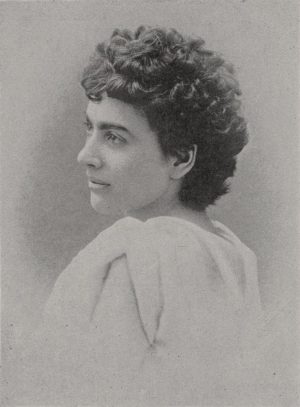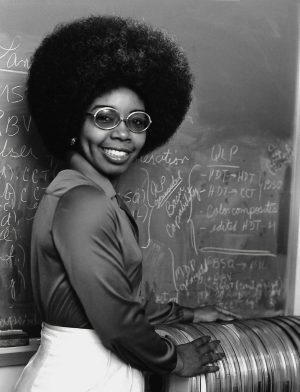Five Women Who Changed the Course of History
March 27, 2023
Women’s History Month is a time to question and investigate the past, marked with intelligent, innovative women whose accomplishments never reaped the attention they deserved. This article spotlights five remarkable women who changed the course of history.
Nellie Bly – Best Reporter in America

Nellie Bly, born in Pennsylvania in 1864, was an American investigative journalist.
In 1885, Bly became a writer for the Pittsburgh Dispatch, and her articles centered on the lives of working women. After factory owners complained about Bly’s writing, the Dispatch reassigned Bly to “women’s pages,” covering fashion, society, and gardening. Unsatisfied, Bly yearned to “do something no girl has done before.”
In 1887, Bly left the Dispatch for New York City. For four months, Bly faced countless rejections, as no news editor wanted to hire a woman. Penniless, Bly maneuvered her way into Joseph Pulitzer’s New York World and took an undercover assignment.
The undercover assignment requested that Bly probe reports of brutality at the Women’s Lunatic Asylum. Bly feigned insanity to be committed to the asylum and endured the harsh conditions for ten days. Upon release, Bly published a groundbreaking report and the book Ten Days in a Mad House. Bly’s investigation exposed the conditions at the insane asylum, raising awareness, sparking outrage, and prompting legal reforms.
In later years, Bly’s courage only increased. Fascinated by Jules Verne’s book Around the World in 80 Days, Bly pitched a real-world circumnavigation that would beat the fictional Fogg’s record of 80 days. The editors liked Bly’s pitch, but they wanted a man, not Bly, to go on the voyage.
Bly said, “Very well.. Start the man. I’ll start the same day for another newspaper and beat him!”
The editors caved, and, one year later, Bly fearlessly set off on the 24,899 mile journey around the globe. Bly finished the expedition in a record time of 72 days.
At the age of 50, Bly became the first woman to report from World War One’s Eastern Front. To illuminate soldiers’ experience on the battlefields and in the trenches, she published the article “Nellie Bly on the Firing Line.”
Despite gender barriers, Bly pioneered investigative journalism and secured her place in history. When Bly died in 1922, the renowned newspaper editor Arthur Brisbane remembered Bly as “the best reporter in America.”
Sources: National Women’s History Museum, Wikipedia, Encyclopedia Britannica, and History Net
Elizabeth Magie – Monopoly’s Inventor

Elizabeth Magie, born in 1866 in Illinois, was the original inventor of Monopoly.
Magie was an outspoken activist for the feminist movement and Georgism, an economic philosophy that promotes a single tax.
In 1904, Magie created The Landlord’s Game – the first version of Monopoly – to critique the injustices of unchecked capitalism and illuminate the economic effects of land monopolism.
Magie said, “It is a practical demonstration of the present system of land-grabbing with all its usual outcomes and consequences.”
Magie received a U.S Patent for her board game. At the time, less than one percent of patent applicants were women.
However, in 1933, Charles Darrow claimed a version of The Landlord’s Game as his own and sold it to Parker Brothers. While Darrow profited millions, Magie made merely $500 for her creation.
During the nationwide Monopoly craze, Magie sought to expose the truth. In 1936 interviews, Magie conveyed anger at Darrow’s plagiarism. Sadly, justice was not restored. In 1948, Maggie died in relative obscurity.
Magie’s story raises the question, how many women were robbed of their creation and still deserve recognition and credit today?
Sources: Wikipedia and New York Times
Hedy Lamarr – Mother of Wi-Fi

Hedy Lamarr, born in Vienna in 1914, was an Austrian-American actress and inventor.
Often cast in roles as the exotic seductress, Lamarr is known for her natural beauty on the big screen. During Hollywood’s Golden Age, Lamarr was named the “most beautiful woman in the world.” Though Lamarr became a box-office sensation, she also achieved incredible innovations.
Lamarr launched the technology that would become the basis for modern WiFi, GPS, and Bluetooth systems. Working with George Antheil, Lamarr conceived of a new communication system, involving “frequency hopping” amongst radio waves, that could guide torpedoes to their targets in war.
Lamarr and Antheils’ frequency hopping technology earned a U.S Patent in August of 1942, but the Navy never implemented the technology. It took decades before Lamar’s inventive genius was recognized by the public.
In 1997, Lamar became the first woman to receive the Bulbie Gnass Spirit of Achievement Award. In 2014, after her death, Lamarr was inducted into the National Inventors Hall of Fame. Now, Lamar’s achievements have deemed her “the mother of Wi-Fi.”
Sources: National Women’s History Museum, Wikipedia, Newsweek
Marie Tharp – Mapped the Ocean Floor

Marie Tharp, born in 1920 in Michigan, was an American geologist and oceanographic cartographer.
In 1947, Tharp landed a position at Lamont Geological Observatory, where she worked on plotting the ocean floor with Bruce Heezen. During their collaboration, Heezen collected bathymetric data aboard the research ship Vema, and Tharp – barred from working on ships due to her gender – used Hezzen’s data to draw maps.
In 1952, Tharp identified an aligned, v-shaped structure running continuously through the axis of the Mid-Atlantic Ridge. Tharp believed it might be a rift valley, formed by the oceanic surface being pulled apart. However, Hezeen dismissed Tharp’s discovery of the rift valley and theory of continental drift as “girl talk.”
Tharp’s rift valley would later be accepted, but only after a man named Howard Foster confirmed it.
In 1957, Tharp and Heezen published the first map of the Atlantic. Tharp’s drawings revealed canyons, ridges, and mountains, debunking previous notions that the seafloor is mostly flat and featureless.
In 1977, Tharp and Heezen published the first complete map of the ocean floors. Tharp’s work proved the notion of plate tectonics, the idea that the continents move over time.
Columbia University said, “The discovery revolutionized our understanding of how nearly everything on the planet works.”
Sources: Columbia University and Wikipedia
Valeria Thomas – Revolutionized Technology

Valeria Thomas, born in 1943 in Maryland, is an American data scientist and inventor.
In 1960, Thomas enrolled at Morgan State University, where she was one of two women majoring in physics. In 1964, Thomas graduated with a degree in physics with the highest honors and landed the position of a data analyst for NASA.
From 1964 to 1970, Thomas managed the development of image-processing systems for the Landsat satellite. Thomas’s participation in the Landsat program contributed to NASA’s goal of visualizing Earth from space.
In 1976, Thomas attended an exhibition that displayed a light illusion. The exhibition inspired Thomas to develop the illusion transmitter, which uses concave mirrors to create optical illusion images. To this day, NASA uses the illusion transmitter, and scientists are working on ways to incorporate the technology into surgical tools and television sets.
Additionally, Thomas advanced countless other projects from LACIE (Large Area Crop Inventory Experiment) to SPAN (Space Physics Analysis Network), and won numerous awards.
Throughout her life, Thomas encouraged and inspired young girls, especially African American girls, to pursue science education.
Sources: Wikipedia and Massachusetts Institute of Technology
Women have been instrumental in shaping the nation, yet many of their contributions have been overlooked or forgotten. I hope my article inspires you to look beyond history textbooks and illuminate the stories of extraordinary women.














Abby Thomas • Mar 28, 2023 at 11:10 am
LOVE LOVE LOVE this Ale!!